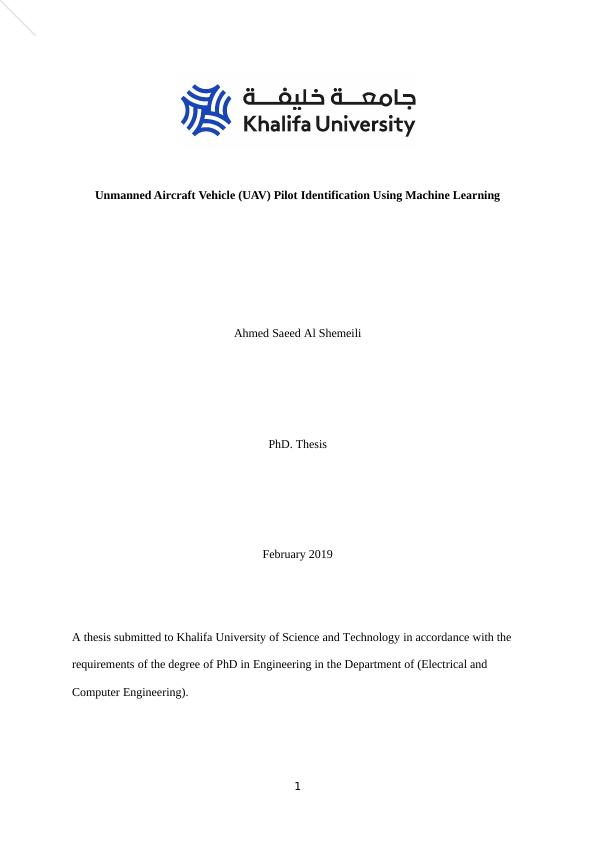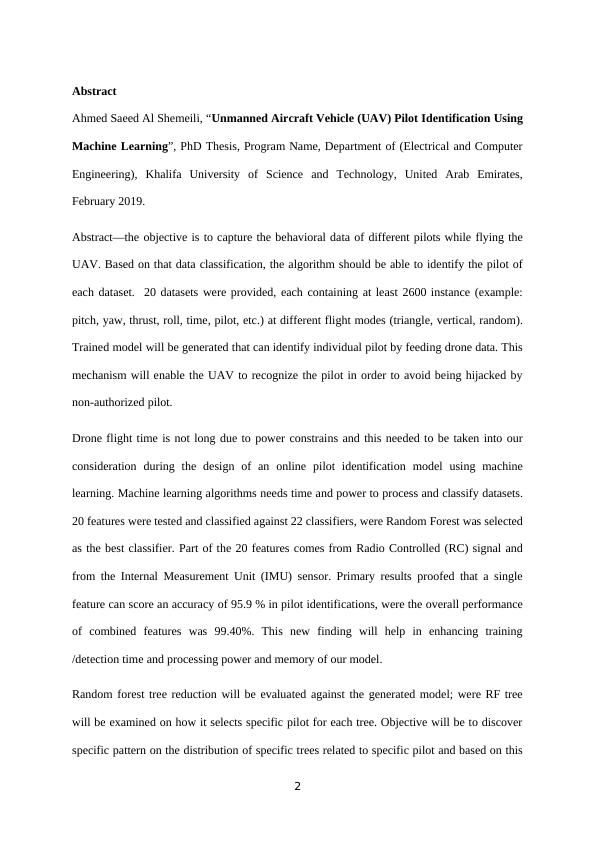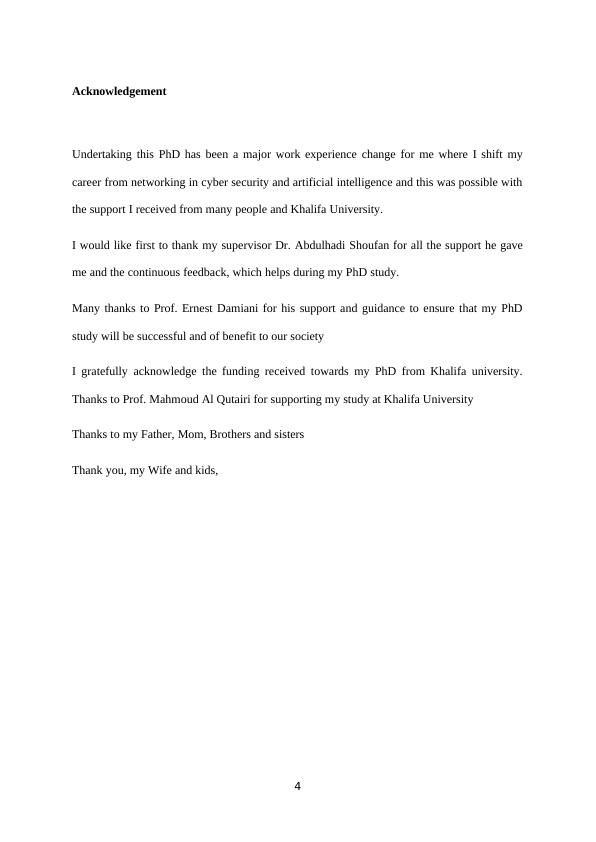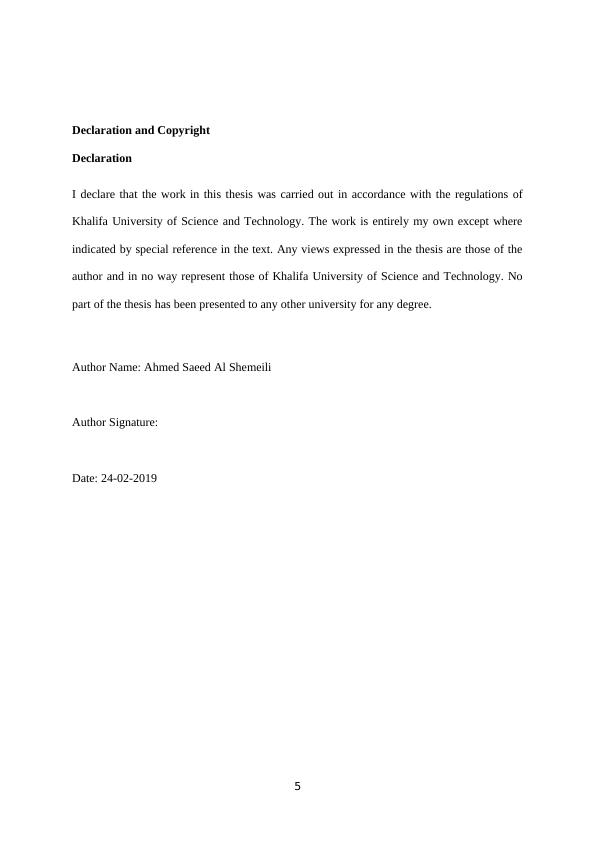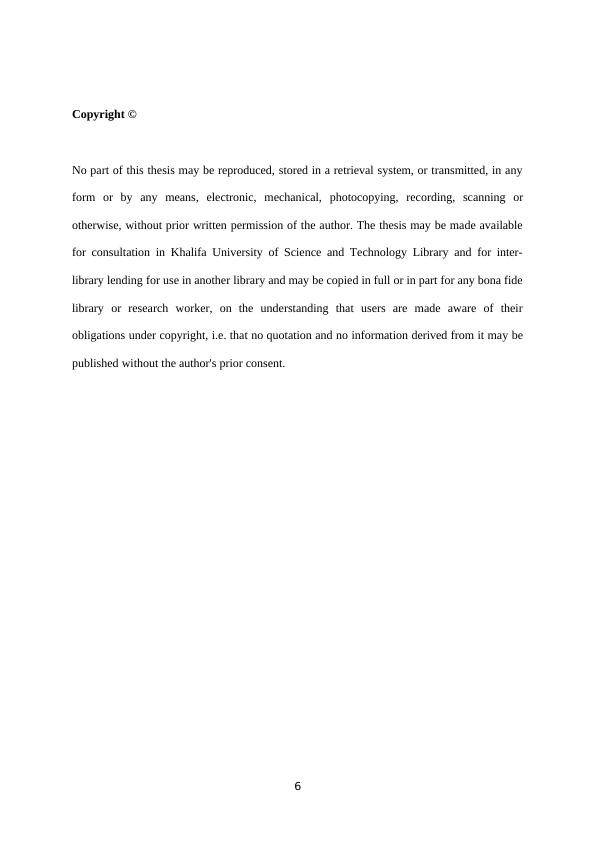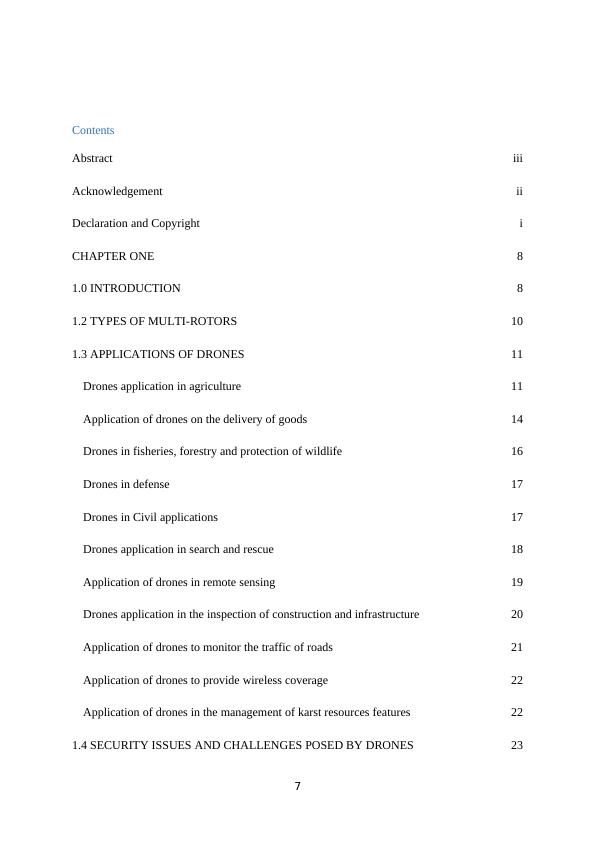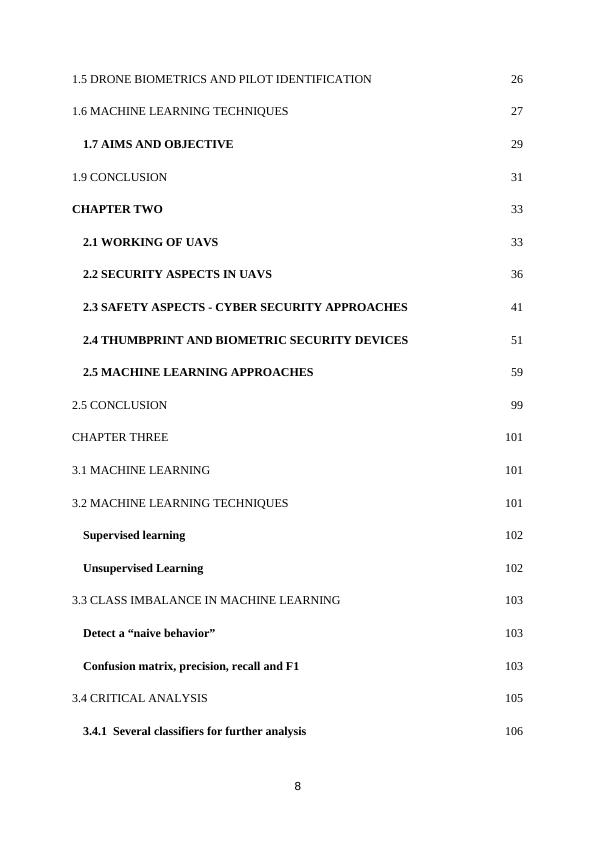Unmanned Aircraft Vehicle (UAV) Pilot Identification Using Machine Learning
226 Pages35609 Words139 Views
Added on 2022-11-29
About This Document
This PhD thesis focuses on capturing the behavioral data of different pilots while flying UAVs and using machine learning algorithms to identify the pilot. The objective is to develop a mechanism that enables UAVs to recognize the pilot in order to avoid being hijacked by non-authorized pilots. The thesis includes the testing and classification of 20 features against 22 classifiers, with Random Forest being selected as the best classifier. The results show that a single feature can score an accuracy of 95.9% in pilot identification, while the overall performance of combined features is 99.40%. The thesis also explores the reduction of random forest trees to save power and memory.
Unmanned Aircraft Vehicle (UAV) Pilot Identification Using Machine Learning
Added on 2022-11-29
ShareRelated Documents
End of preview
Want to access all the pages? Upload your documents or become a member.
Unmanned Aircraft Vehicle (UAV) Pilot Identification Using Machine Learning
|194
|37026
|218
Unmanned Aircraft Vehicle (UAV) Pilot Identification Using Machine Learning
|32
|6106
|32
Unmanned Aircraft Vehicle (UAV) Pilot Identification Using Machine Learning
|184
|30717
|50

